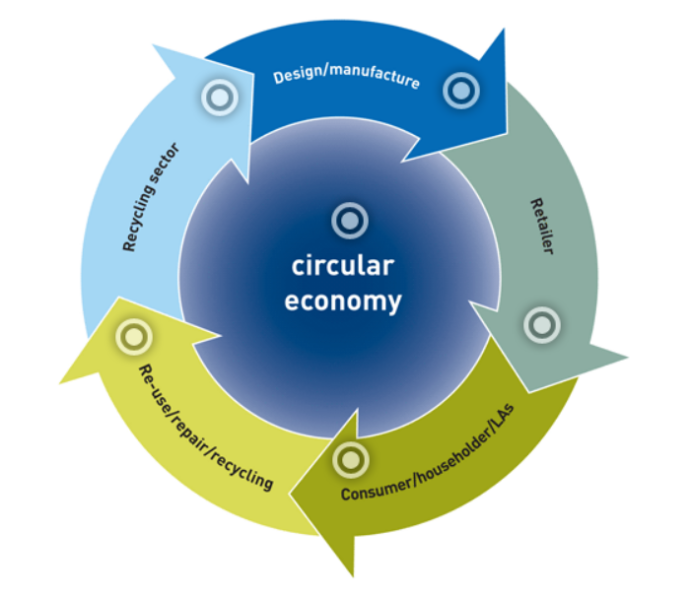Traditional linear economy is; make something, use it and then, dispose of it. A circular economy is an alternative in which we keep resources in use for as long as possible, get the maximum value from them whilst in use, then recover the materials and use them to make new products again.
Many products are not designed to be recycled but more and more industries now are looking at how their products are designed in a way that the materials can be separated and recycled at the end of the product lifetime.
Use the Circular Economy information sheet, made in partnership with Manchester Metropolitan University, for background information.
Other good resources for information and ideas can be found on the Ellen McArthur foundation and the Made to be made again sites.
Gather a range of products and display in the room. Try to get items that are made of component parts, or more than one material.
Ask your group to decide if they can easily be recycled.
For example: a famous crisp snack is marketed in a coated cardboard tube with a metal end and plastic lid. This is an example of a product that has not used the circular economy model. Some companies say that their product can be recycled if it is collected separate to the household waste collection schemes but this relies on the resident participating.
Can your group find examples of other products where the component parts can easily be separated and recycled.
